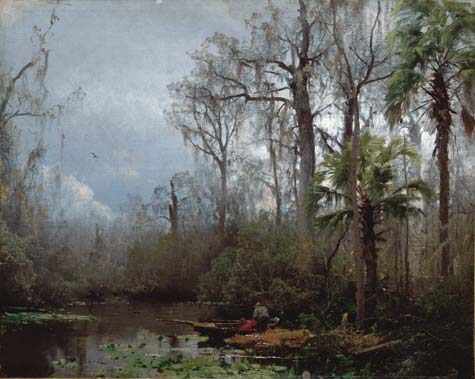Florida conjures visions of a lush tropical paradise, with vast natural resources and endless opportunities for those most daring to try. The cultural landscape, however, is a combination of nature and humanity; the landscape, from white sand beaches to murky swamps, provides the backbone; the inhabitants provide the culture. Florida’s cultural landscape is light, bright, expansive, and ripe with potential, but also wild, untamed, ambiguous, and obscure.
Artists across the centuries have explored the cultural landscape’s density of vegetation, people, and mystery – begging the viewer to question what is lurking beneath the literal and figurative shadows. Since Jacques le Moyne, the first European artist known to have visited Florida, arrived in 1564, artists have wrestled with deciding how to capture this dichotomy in their depictions of the land we call home. Through these works of art, explore how Florida and man coexist, whether in harmony or imbalance.
Image:
Herman Herzog, German, 1832-1932, Figure in a River Landscape, Oil on canvas, Gift of Mr. and Mrs. C. Herman Terry, AG.1987.11.1.



